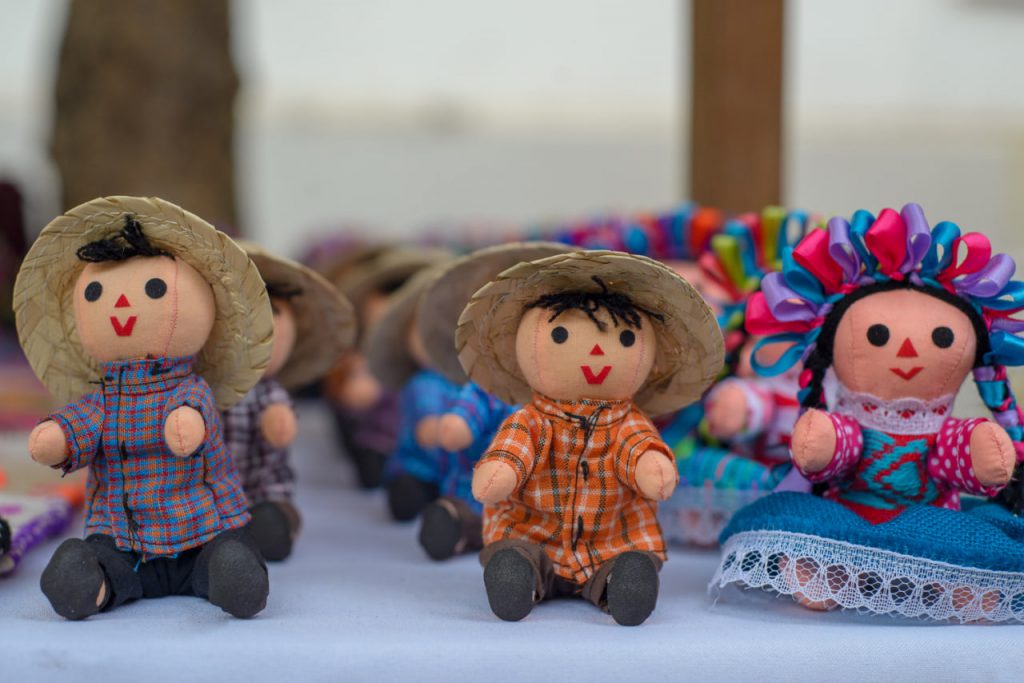Doll-making is a fulfilling craft that allows for endless creativity, but like any art form, it comes with its own set of challenges. Whether you are a beginner or an experienced doll maker, it’s easy to fall into common pitfalls that can affect the quality, durability, and overall look of your dolls. Recognizing these mistakes and learning how to avoid them will help you create beautiful, professional-looking dolls every time. This blog explores some of the most frequent errors in doll-making and offers practical tips to overcome them.
Choosing the Wrong Fabric
One of the foundational elements of doll-making is selecting the right fabric. Using inappropriate fabric can result in a doll that is difficult to sew, lacks durability, or has an undesired appearance.
- Avoid overly stretchy or slippery fabrics: These fabrics can be hard to handle and may distort during sewing or stuffing. Instead, choose stable cottons, linens, or felt for easier manipulation.
- Test fabric shrinkage: Some fabrics shrink or change texture after washing. Always pre-wash your fabric to avoid unwanted size changes after your doll is completed.
- Match fabric weight to doll size: Lightweight fabrics work well for small, delicate dolls, while sturdier fabrics are better suited for larger dolls.
Poor Cutting and Sewing Techniques
Precision in cutting and sewing is crucial for a well-shaped doll.
- Inaccurate cutting: Sloppy cutting leads to uneven parts that are difficult to assemble properly. Use sharp scissors or rotary cutters and take your time cutting along marked lines.
- Skipping seam allowances: Forgetting to add or maintain seam allowances can cause pieces to be too small, making assembly impossible or resulting in misshapen dolls. Always mark and sew accurate seam allowances.
- Uneven or loose stitches: Consistent stitching ensures durability and a neat finish. Avoid sewing too loosely or unevenly, as this weakens seams and can cause stuffing to escape. Practice even stitching and use appropriate needle sizes.
Overstuffing or Understuffing
Stuffing determines your doll’s shape, firmness, and ability to hold its form.
- Overstuffing: Adding too much stuffing can cause seams to strain and fabric to stretch, resulting in a distorted or lumpy doll. It can also make the doll too stiff and less huggable.
- Understuffing: Insufficient stuffing leads to floppy, shapeless dolls that lack structure and look unfinished. Aim for a firm but flexible fill, adding stuffing gradually and evenly. Use stuffing tools or chopsticks to push fiberfill into small areas.
Ignoring Fabric Grain and Direction
Paying attention to fabric grain is essential for smooth sewing and proper fit.
- Sewing off-grain: Cutting fabric pieces off the grain can cause twisting and warping once sewn, distorting the doll’s shape. Always align fabric patterns and cuts with the grain.
- Ignoring directional prints: If your fabric has a directional print, plan your cuts carefully so that patterns and designs appear as intended on the finished doll.
Neglecting Seam Finishing
Seam finishing is often overlooked but crucial for durability.
- Leaving seams raw: Raw edges can fray and weaken over time, especially with washing or handling. Use techniques like pinking shears, zigzag stitching, or French seams to finish edges and prevent fraying.
- Not reinforcing stress points: Areas such as joints, limbs, and necks undergo more strain. Reinforce these with extra stitching or small patches to prevent tearing.
Rushing the Assembly Process
Assembly requires patience and attention to detail.
- Skipping pinning or basting: Failing to pin or baste pieces before final sewing can lead to misaligned parts and uneven seams. Always pin and test fit pieces first.
- Hurrying sewing steps: Sewing too quickly can result in mistakes, missed seams, or broken needles. Take your time and focus on accuracy.
Overcomplicating Designs Too Early
Starting with complex patterns or intricate details can be overwhelming for beginners.
- Beginner overwhelm: Trying advanced techniques without practice may lead to frustration and discouragement. Start with simple patterns and gradually build your skills.
- Skipping practice: Practice basic skills like stitching, stuffing, and facial features on sample pieces before working on your main project.
Neglecting Facial Features and Expressions
The face is the soul of the doll, and neglecting its detailing can make your doll look lifeless.
- Rushing facial details: Poorly executed facial features can make a doll look unfinished or unappealing. Use careful techniques such as embroidery, painting, or appliqué to create expressive faces.
- Ignoring symmetry: Uneven eyes, noses, or mouths can be distracting. Use guides and measurements to maintain symmetry.
- Overdoing features: Avoid making features too bold or exaggerated unless stylistically intended; subtlety often creates the most charming expressions.
Forgetting to Secure Small Parts
Small details like buttons, beads, or accessories add charm but require secure attachment.
- Loose attachments: Small parts that are not sewn or glued securely can become choking hazards or get lost. For dolls intended for children, avoid small detachable parts or use safety eyes and firmly stitched embellishments.
- Ignoring child safety: Always consider the intended user and choose materials accordingly, prioritizing safety and durability.
Lack of Finishing Touches
Finishing touches complete your doll and give it a professional look.
- Skipping pressing: Pressing seams and fabric during assembly keeps pieces flat and smooth, resulting in neater seams and shapes.
- Neglecting trimming: Remove loose threads and excess fabric inside seams for a cleaner finish.
- Not adding personalization: Adding small details like embroidery initials, labels, or unique clothing gives your doll individuality and charm.

